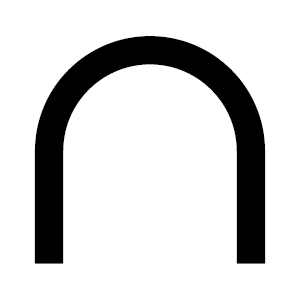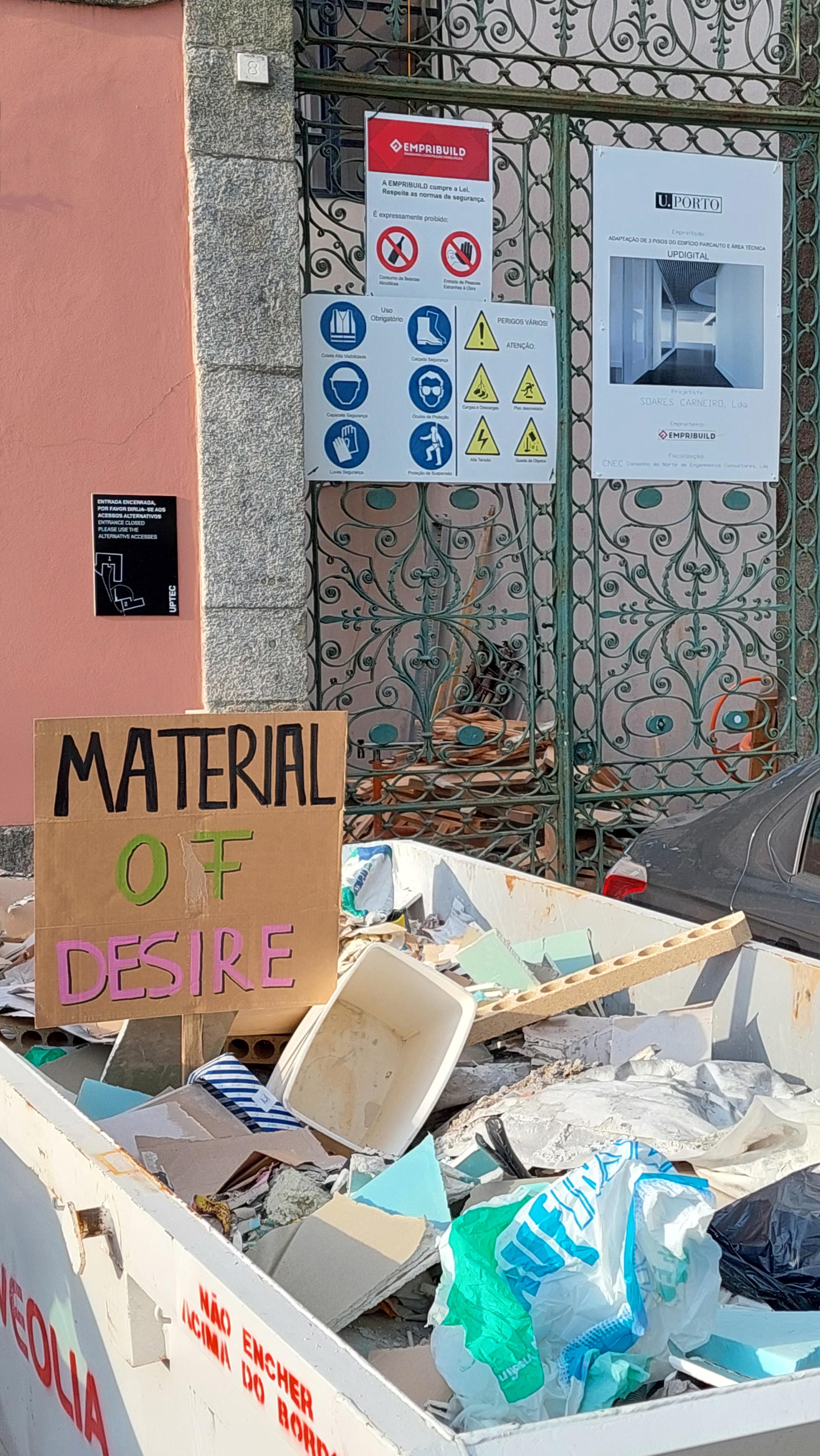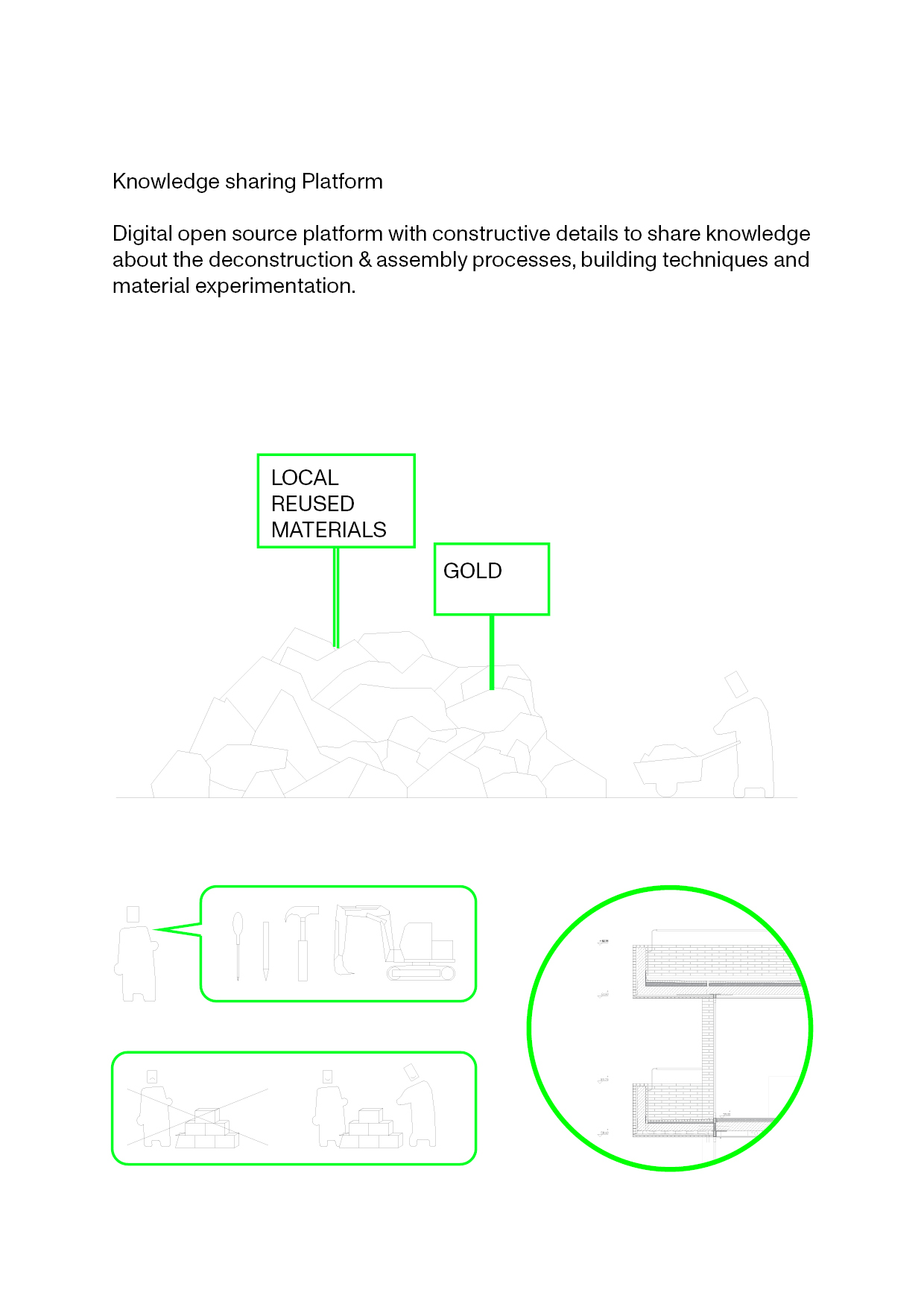
MATERIALS OF DESIRE.
Constructing circular dreams through DfD/7Rs components
April 2020,
Time shows that waste, if you wait long enough, often turns into gold. Our landfills will become our mining areas, and diggers will search for construction materials that aren’t being produced anymore. Deconstruction will become more lucrative. Materials will be separated and carried into new vernacular and industrial processes based on recycling. These new systems will enable a new aesthetics of desire. Desire written into your house, apartment or other new edifice. This desire says, “I value the future by (re-)valuing the past”.
People will reject building components and products that incorporate polluting materials or are based on exploitative, extractive business models.
A “re-“(cycled, used, claimed) aesthetics will emerge. Just as societal pressure is growing to reduce carbon emissions in transport – visible in new vehicles and mobility systems – so will a visibility of “re-aesthetics” emerge in the construction industry.
Experimental open Pavilion and Archive.
That’s why we propose to explore desire as a powerful tool to promote the changes needed to anticipate this optimistic future, where raw resources stay preserved and DfD/7Rs components are continuously being reintroduced in a circular economy.
Experimental use of DfD/7Rs components by architects, interior designers, and through participatory experiments with communities, aims to create a new demand that answers the desire for change.
Our proposal therefore centres on creating participatory workshops helping co-create an open local discourse about DfD/7Rs components for Basel, while linking with the archive already being generated.The pavilion would be partly constructed with these components for the opening but finished by the local industries, professionals and residents of Basel who, under the direction of our team, bring their creativity to complete the pavilion.
These materials of desire become concretised dreams.

Towards Design for Disassembly & the 7Rs.
Environmental activists will keep on pressuring society to use only reused materials that comply with the Green Deal rules, and industries that Design for Disassembly (DfD) or the 7Rs of recycling (recycle, refuse, reduce, reuse, repair, re-gift, recover) will become bigger than the ones still extracting raw materials.
Our approach is to analyse different desires (affordability, sophistication, comfort, shelter, conscious or self-esteem) and to re-value the utilisation of standard and historical components of former building projects. Through the eclectic, dynamic aesthetics of mixing DfD and 7Rs components, citizens, consumers and companies co-create new desirable visions for near-future buildings that re-evaluates these resources and values we attribute to them.
The circular building economy requires new infrastructures and digital networks to make it easy to find these components. Such systems can work on a European, national, regional and local scale. In the latter example, communities of circularity (city neighbourhoods, villages, small towns) can share their components through online databases.

Research and collaboration between:
(alphabetical order)
Alastair Fuad-Luke - Researcher and educator
Alban Wagener - Architect
Irena Übler - Industrial Designer
Miguel Gomes - Architect
Teresa Fradique - Anthropologist




